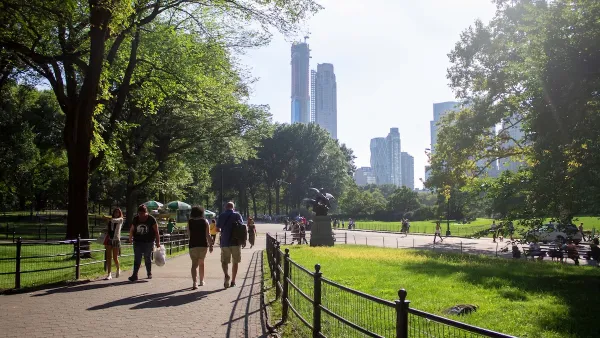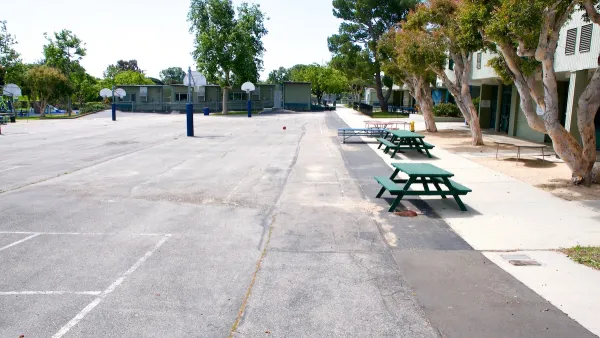How trauma-informed urbanism can make cities and their residents healthier and more resilient.

An opinion piece by Nicholas Lalla in Fast Company reveals the high social and economic costs of traumatic disasters, highlighting how cities can boost their resiliency and prepare for disaster recovery.
“A city that isn’t resilient enough to withstand the aftermath of a disaster, manmade or natural, isn’t one that can serve for long as a viable center of commerce, culture, and society,” Lalla writes. “Research published in The Journal of Clinical Psychiatry found that in 2018, post-traumatic stress disorder cost the U.S. economy over $230 billion, while research from the University of Pennsylvania found that childhood trauma alone cost society over $450 billion each year.”
In Lalla’s view, “Above and beyond strong infrastructure, such as levees that protect my hometown of New Orleans against hurricanes, cities need to better anticipate, mitigate, and heal from trauma itself.” Lalla describes an emergent field known as trauma-informed urban development, an approach that focuses on “resilience, community cohesion, and aid in recovery.” The approach includes strategies such as consulting with mental health professionals, connecting people with nature and green spaces that can help improve mental health and air quality, supporting vibrant, mixed-use developments, and providing economic opportunities to help residents recover after disasters.
Many of the goals of the trauma-informed urban development movement dovetail with the goals of other urbanists: walkability, better public transit, green spaces, and economic opportunity, all qualities that help cities “stand a good chance of being resilient to trauma.”
FULL STORY: How we build cities can help us overcome traumatic events

National Parks Layoffs Will Cause Communities to Lose Billions
Thousands of essential park workers were laid off this week, just before the busy spring break season.

Retro-silient?: America’s First “Eco-burb,” The Woodlands Turns 50
A master-planned community north of Houston offers lessons on green infrastructure and resilient design, but falls short of its founder’s lofty affordability and walkability goals.

Delivering for America Plan Will Downgrade Mail Service in at Least 49.5 Percent of Zip Codes
Republican and Democrat lawmakers criticize the plan for its disproportionate negative impact on rural communities.

Test News Post 1
This is a summary

Test News Headline 46
Test for the image on the front page.

Balancing Bombs and Butterflies: How the National Guard Protects a Rare Species
The National Guard at Fort Indiantown Gap uses GIS technology and land management strategies to balance military training with conservation efforts, ensuring the survival of the rare eastern regal fritillary butterfly.
Urban Design for Planners 1: Software Tools
This six-course series explores essential urban design concepts using open source software and equips planners with the tools they need to participate fully in the urban design process.
Planning for Universal Design
Learn the tools for implementing Universal Design in planning regulations.
EMC Planning Group, Inc.
Planetizen
Planetizen
Mpact (formerly Rail~Volution)
Great Falls Development Authority, Inc.
HUDs Office of Policy Development and Research
NYU Wagner Graduate School of Public Service





























